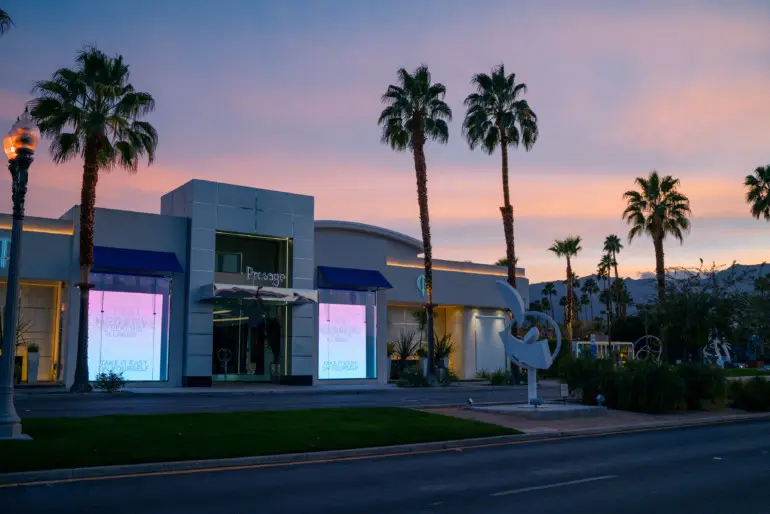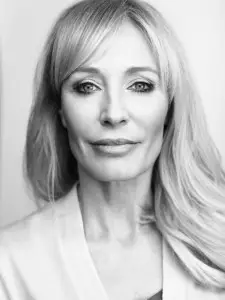 Paula Crown has too many titles to count. She’s one of the most well-known philanthropists not only in Chicago—we have her family to thank for Millennium Park’s Crown fountain—but also nationally. She sits on the board of the Museum of Modern Art in New York and was appointed by Barack Obama to the President’s Committee on the Arts and the Humanities. Then, she’s also a businesswoman: years ago, she was a vice president at the investment bank Salomon Brothers, and now she plays key roles running the Crown family businesses. And, she’s a mother of four. For someone else, that might be enough, but about a decade ago, Crown decided to add another title: She went back to school to earn an MFA and become an artist. Since then, she’s been making headlines worldwide for her multimedia works that combine technology, social activism, collaboration and sustainability.
Paula Crown has too many titles to count. She’s one of the most well-known philanthropists not only in Chicago—we have her family to thank for Millennium Park’s Crown fountain—but also nationally. She sits on the board of the Museum of Modern Art in New York and was appointed by Barack Obama to the President’s Committee on the Arts and the Humanities. Then, she’s also a businesswoman: years ago, she was a vice president at the investment bank Salomon Brothers, and now she plays key roles running the Crown family businesses. And, she’s a mother of four. For someone else, that might be enough, but about a decade ago, Crown decided to add another title: She went back to school to earn an MFA and become an artist. Since then, she’s been making headlines worldwide for her multimedia works that combine technology, social activism, collaboration and sustainability.
The pandemic hasn’t slowed her down—in fact, quite the opposite. In the past year, she’s had public art installations in Times Square in New York City, on Michigan Avenue in Chicago, and in Boston and Milwaukee. Her work tackles pressing issues such as climate change, racial injustice and the COVID-19 crisis.
On view right now in Palm Desert is Emanare, an installation that Crown created for the Intersect art fair (it will remain on view through March). Crown took over an empty retail space, installing LED screens in the windows. Viewers on the street and online are invited to share positive messages that scroll over the screens, as colors from Crown’s paintings morph in the background.
Crown sat down with SPACES Editor-in-Chief Liz Logan for a conversation about art and design.
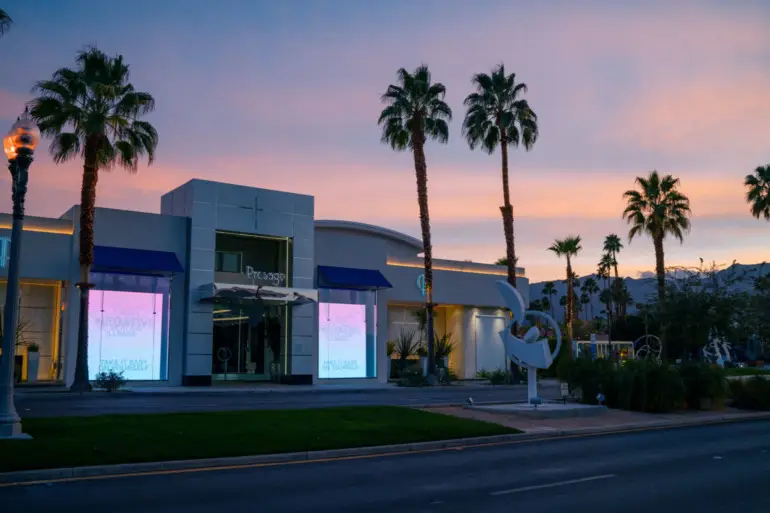
Tell me about Emanare. What inspired this piece?
I was thinking about Tibetan prayer scrolls. As you walk down a row of them, you rotate them, and that has a spiritual effect similar to saying prayers. You’re generating the positivity out into the world. I was planning to do scrolls in a smaller scale, but then the opportunity to use the retail space came along, and I loved the idea of replacing the objects in those windows with collective thought. Thoughts like, “May I be the person that my dog thinks I am,” “may my dad go gently into the night,” “you look good in your mask,” “if things aren’t going right, go left.” We’ve received things in foreign languages and we translate them. The response has been tremendous.
With COVID, it’s easy to think about all the loss and what we can’t do. There’s a lot of ongoing stress in our brains. So, I was thinking about how to flip that around.
How has the pandemic affected you personally?
Well, for one thing, our daughter was going to be married in Hawaii, in May, and all of that got cancelled. Instead we had a 10-person wedding, including the bride and groom, right outside the door here in California, and our 18-year-old, who was home from college, became ordained online. So, she was the officiant. Sometimes it’s so good to shrive away to what’s essential, the true celebration and what’s truly important. Then a month ago, she and her husband had a baby.

Your large-scale sculpture “Jokester,” of a partially crushed red Solo Cup, has really captured people’s imaginations when it’s been shown in Aspen and Milwaukee (and in more diminutive iterations elsewhere). Why do you think people have connected with it so much?
I did not start out saying I’m going to be a Solo cup artist, but the idea that people have taken this on as advocacy against using plastics is wonderful. In the large scale, the cup becomes almost an alarm, and it’s laid on its side, so you can’t get around it. The red is beautiful and jovial, but it also catches your attention. There’s a strong environmental message, but the piece is also about the fact that we all make marks in the world, and those marks have ripple effects. Now I’m working on a bronze version of the sculpture. It’s more crushed and damaged, kind of expressing what we’ve been through.
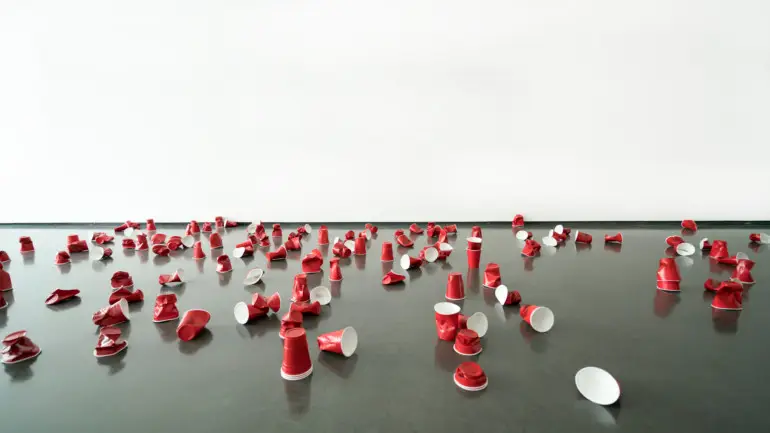
Your studio on Michigan Avenue is designed by the renowned architect Jeanne Gang. What was it like working with her?
It was wonderful, because we have a lot of things in common. We share our points of sustainability. We share a love of reading, libraries and reuse. The space is everything I could have dreamed of. Because of its LEED certification, it’s very safe for my team to be working there—art studios can be gnarly. The beautiful parquet floors in my office are made from salvaged wood that was going to be discarded from Grant Park. It’s a pretty, happy, wonderful space.
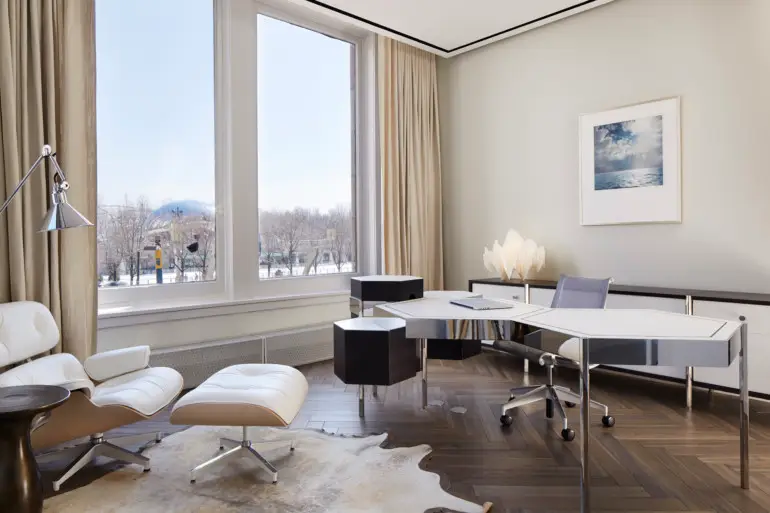
Your art and your philanthropy address a lot of the same issues, such as sustainability and social justice. Do you think of your art and philanthropy as woven together?
Yes, there are a lot of skills and themes that tie together. For one thing, art and creative expression is part of being integrally human. It has gotten sidetracked as being less important. It’s not on Maslow’s hierarchy of needs, but it should be. To communicate, express, and connect is essential.
Some of the skills I use in my art also play a role elsewhere. Like, spatial cognition was very important when we were doing the Crown fountain. Sustainability also plays a role in our businesses, like the Aspen Skiing Company. We were carbon neutral before anyone thought it was important. We knew that was a worthwhile investment, and, that’s how we wanted to be in the world.
When I decided I had to focus on making art, I was concerned that I wouldn’t have the time to be on all the boards and such. But I found other ways to do that and feel pretty sure in my footing.
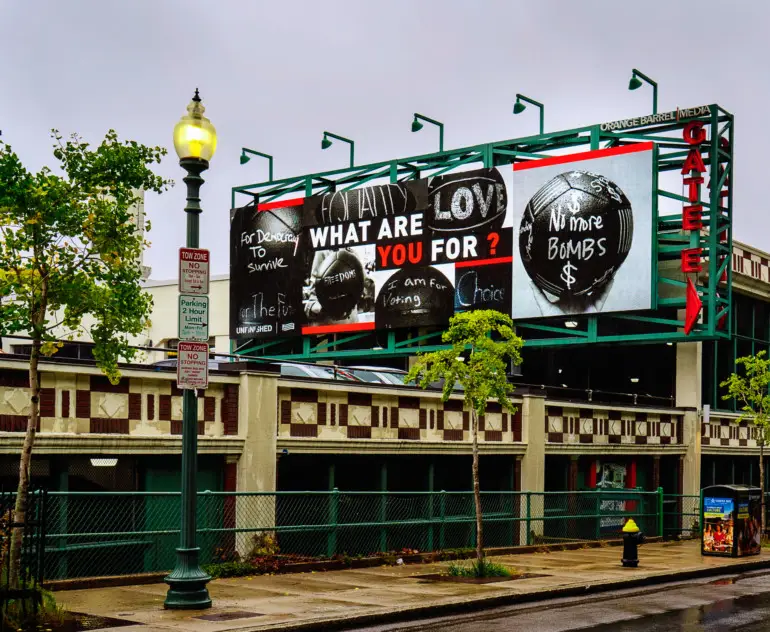
What artists are you following right now?
I just read a book on Ai Weiwei, and I just think of someone like that as having vision, having heart, having taken action, being courageous. Courageous is from the Latin word for heart. Leading with your heart. So often we think about heroic Marvel characters, and Superman, but it’s really about doing things with a heartfelt intent and being accountable. His ability to translate even common objects, like putting a Coke sign on a Chinese traditionally shaped urn, pushes us to confront and to ask questions. Its curiosity is from the Latin, curo, which means to care. When I think about the last couple of years in our politics, people are more interested in telling than asking. Ai Weiwei’s work asks for our participation, our thoughts, our accountability, and that’s something that I think about in my work.
And what are you loving in the world of design? I know, among other things, that you’ve done some fabrics with Holly Hunt.
When people talk about design, it’s put in a different category, and it shouldn’t be. Just because it’s useful doesn’t mean it’s any less artistic or creative, or open-ended. For me, I love Charlotte Perriand, and Corbusier, these classic elements are comfortable to be in, but also nourishing to the eye.
This COVID year has obviously been very productive for you. What are you doing to cope with isolation?
I don’t think anyone has come through this without having some really dark moments—eating way too much popcorn, rose, and ice cream, or whatever their food of choice is. For me, I have a six pack, and it has nothing to do with my abs or beer. I try to sleep well, eat well, work out every day. I reach out to family and friends—that surprise call, or that daily call just to see someone’s face and to see how they’re doing, even though it’s not the same as hugging them. I meditate. And the sixth one is making some sort of art. Before, I was traveling a lot, so it’s good to have time just for deep work and focus. I want to honor that knowledge that’s occurred to me. In a world that is uncertain, I’m more certain than ever about artists’ ability to solve and to innovate.
 Liz Logan is the editor-in-chief of SPACES. Her writing about art, design and lifestyle, has appeared in numerous publications, including The New York Times, The Wall Street Journal, O, The Oprah Magazine and Martha Stewart Living.
Liz Logan is the editor-in-chief of SPACES. Her writing about art, design and lifestyle, has appeared in numerous publications, including The New York Times, The Wall Street Journal, O, The Oprah Magazine and Martha Stewart Living.
